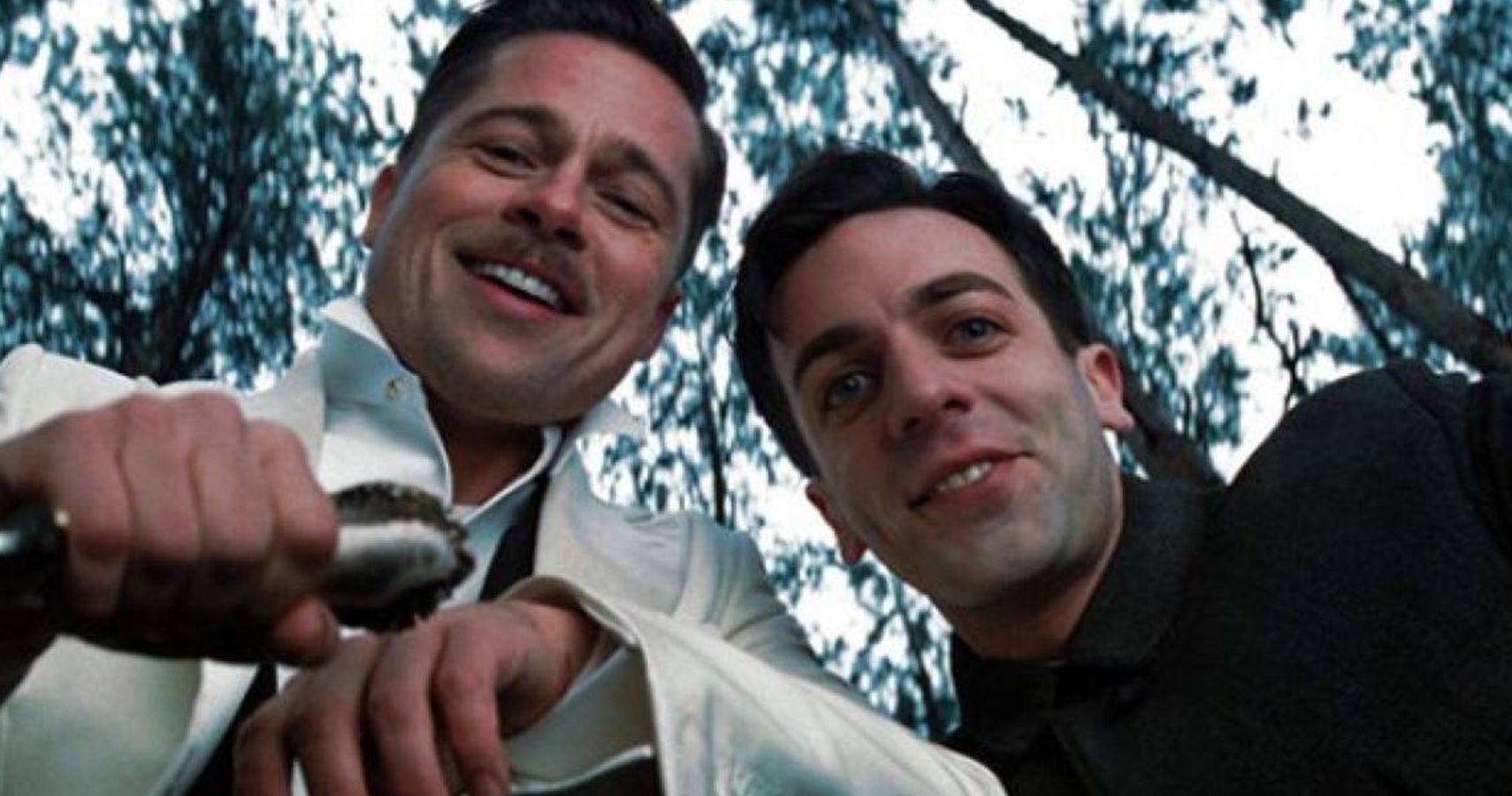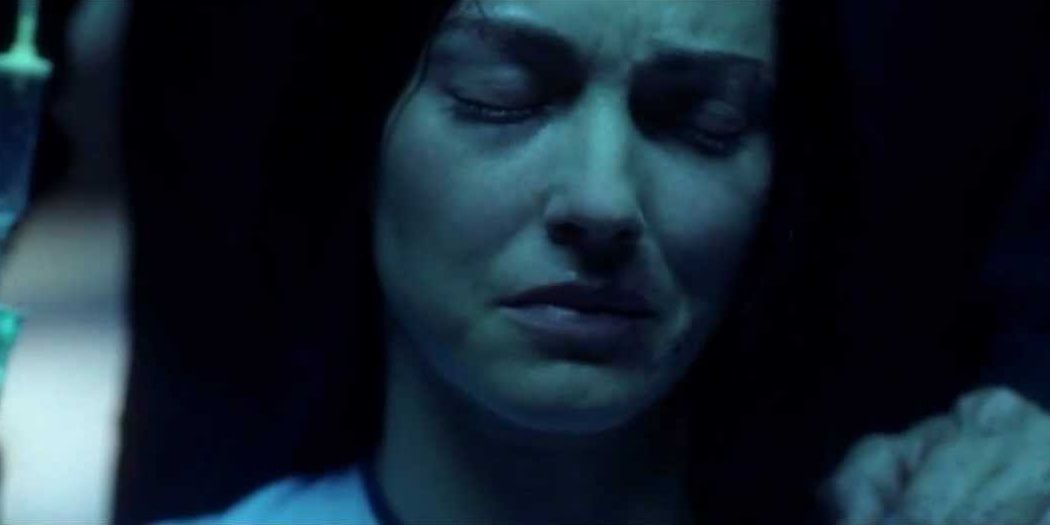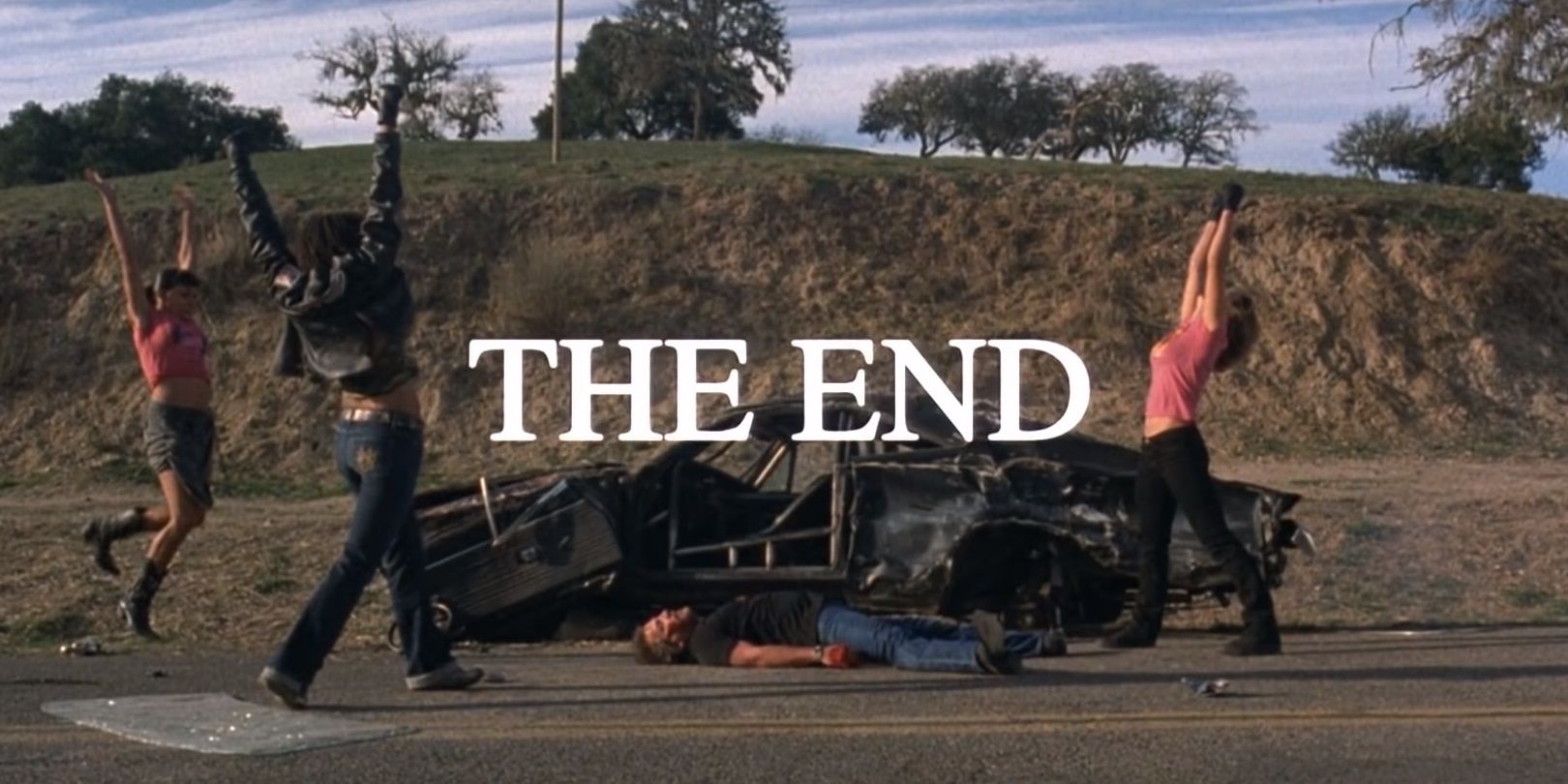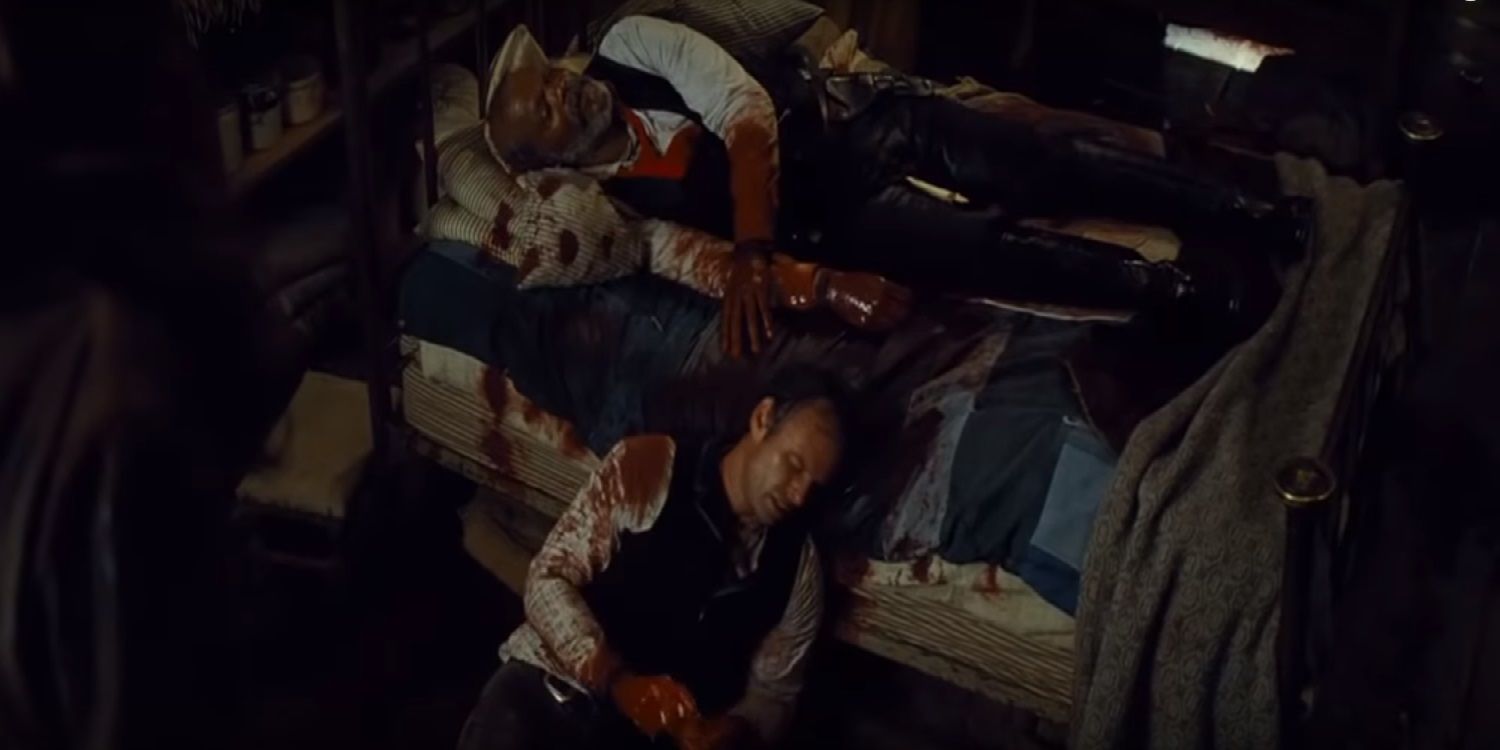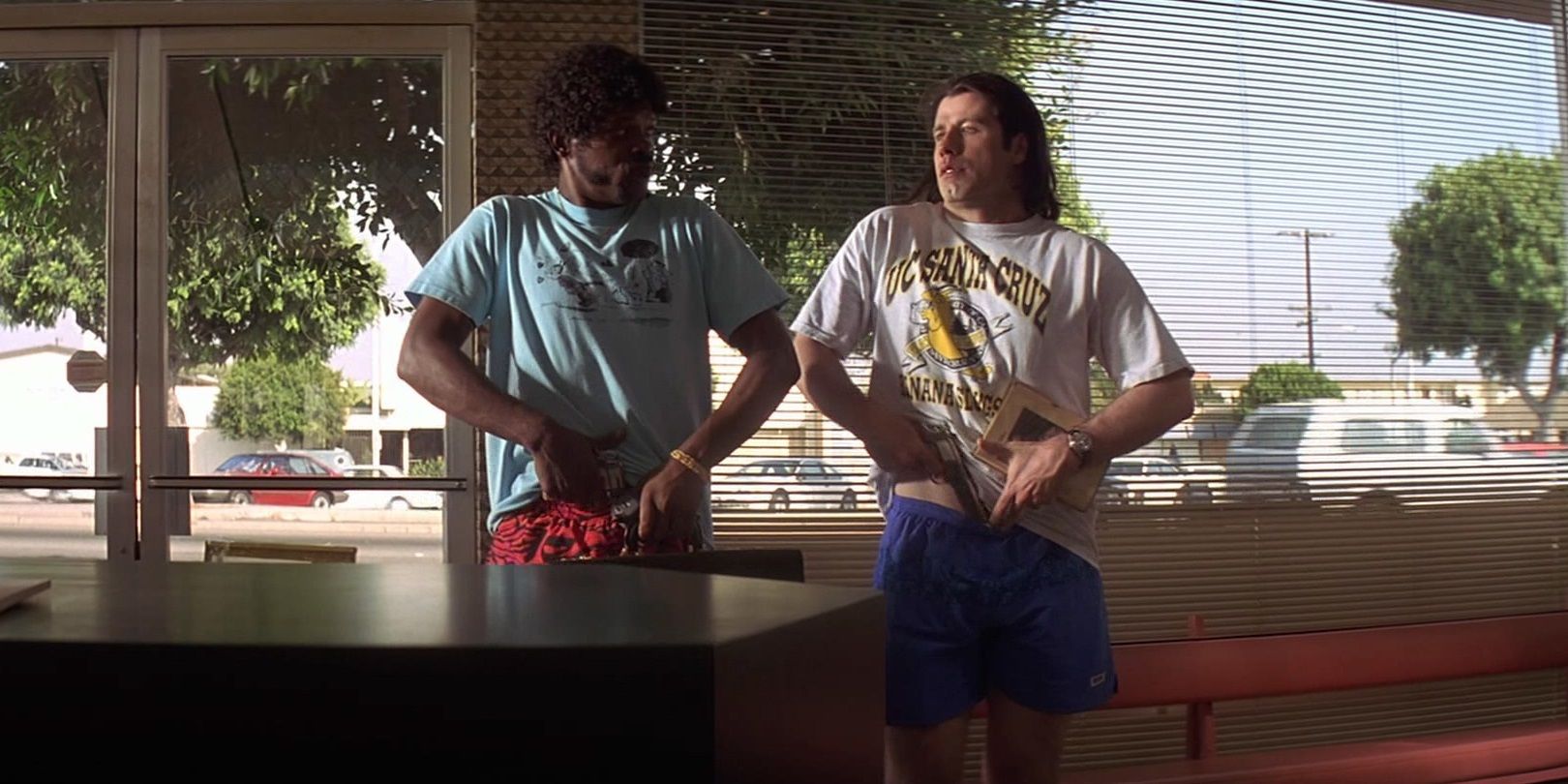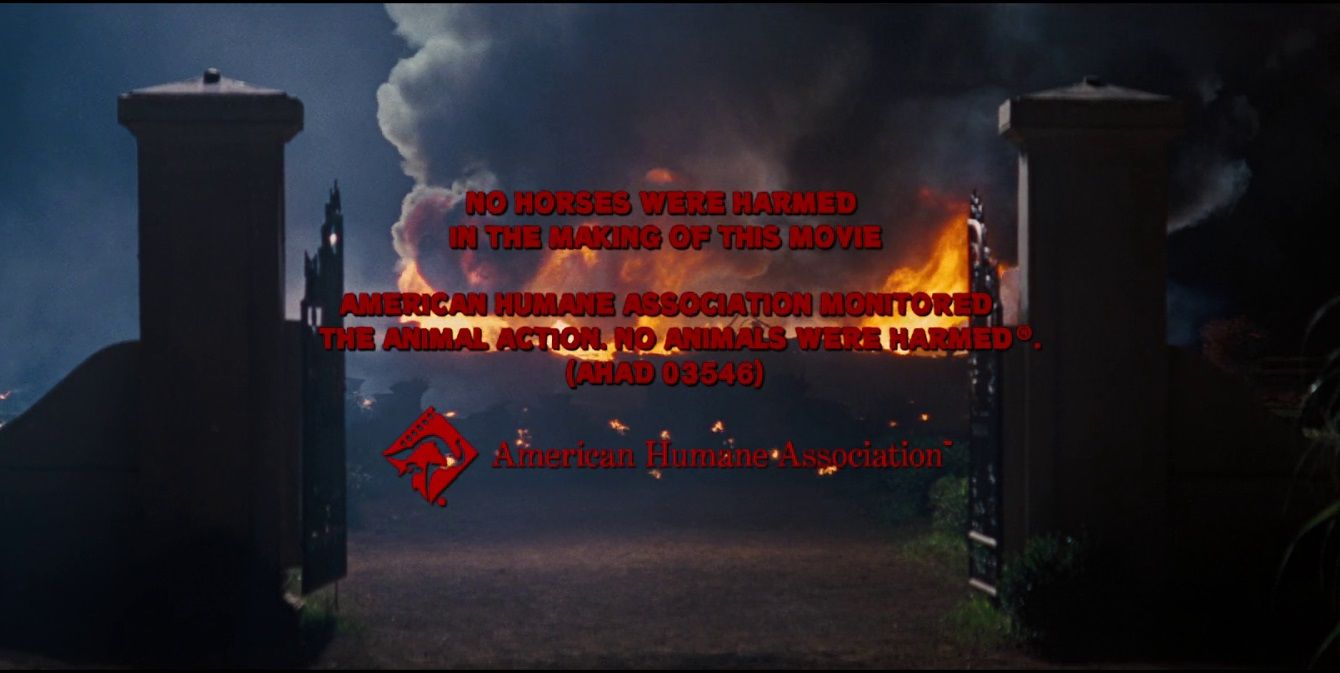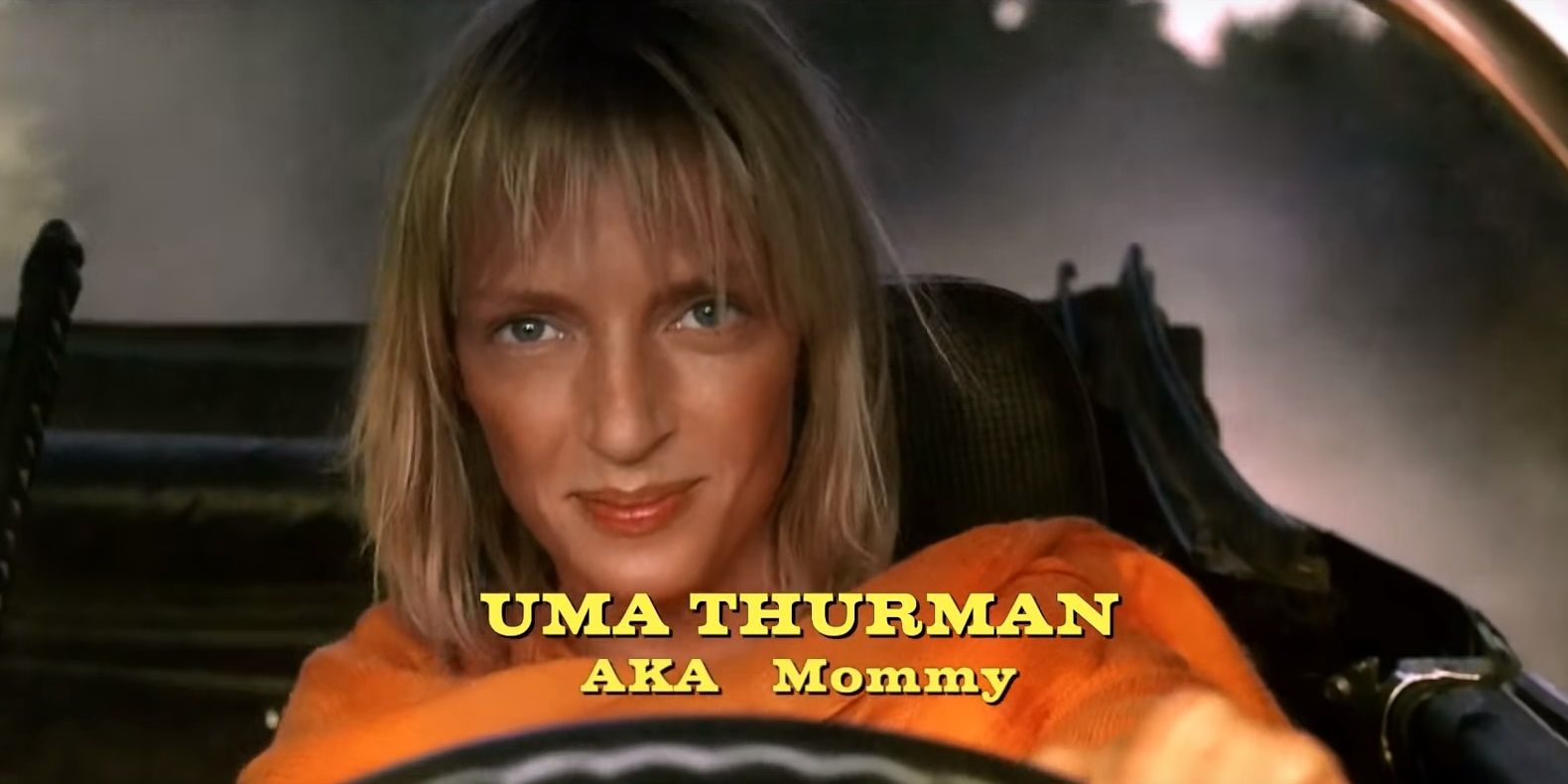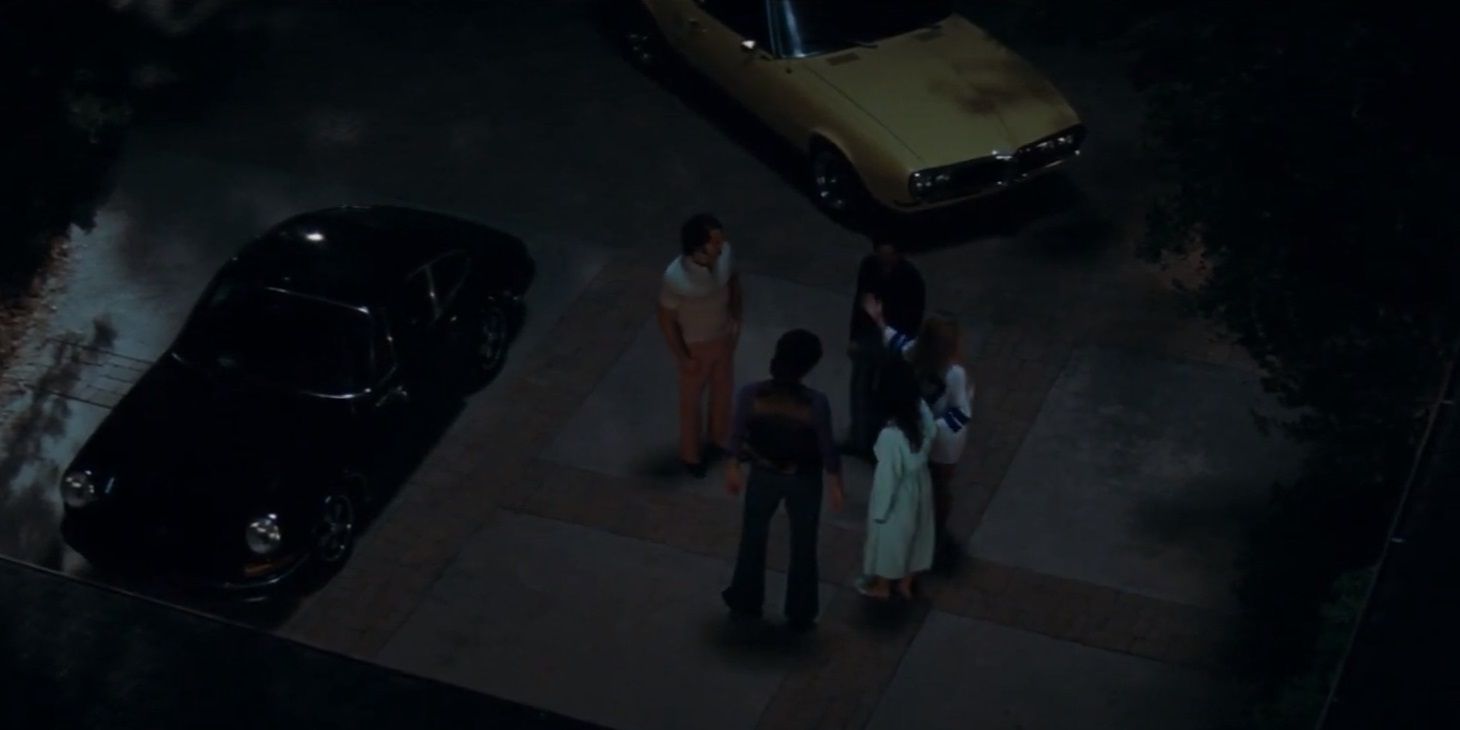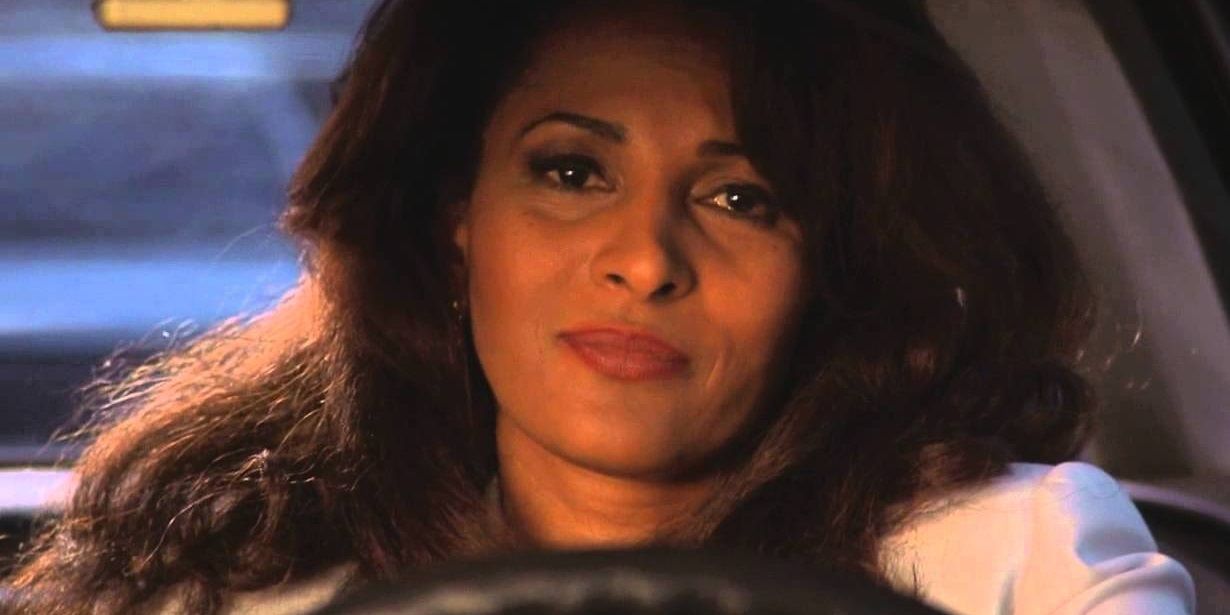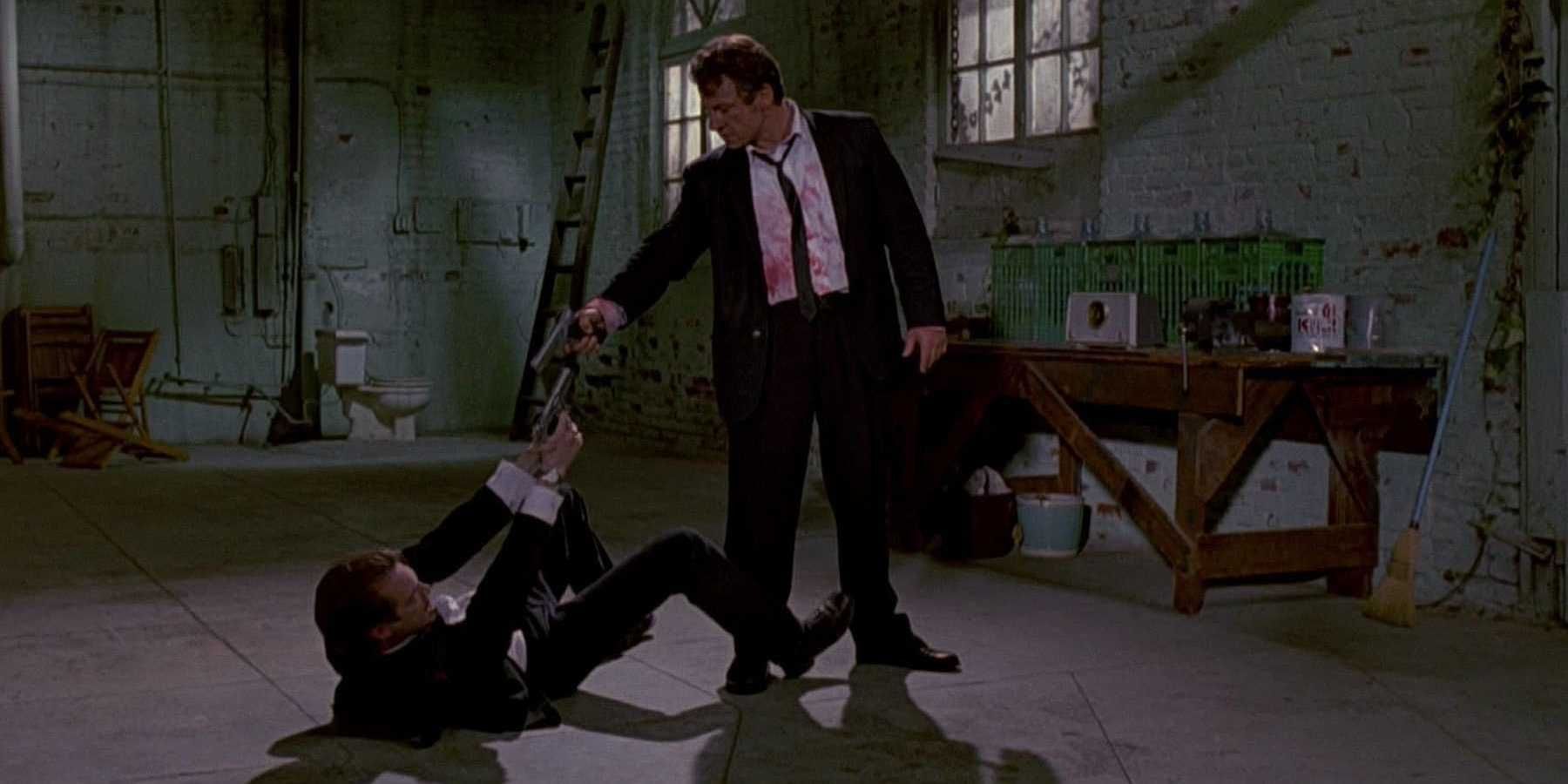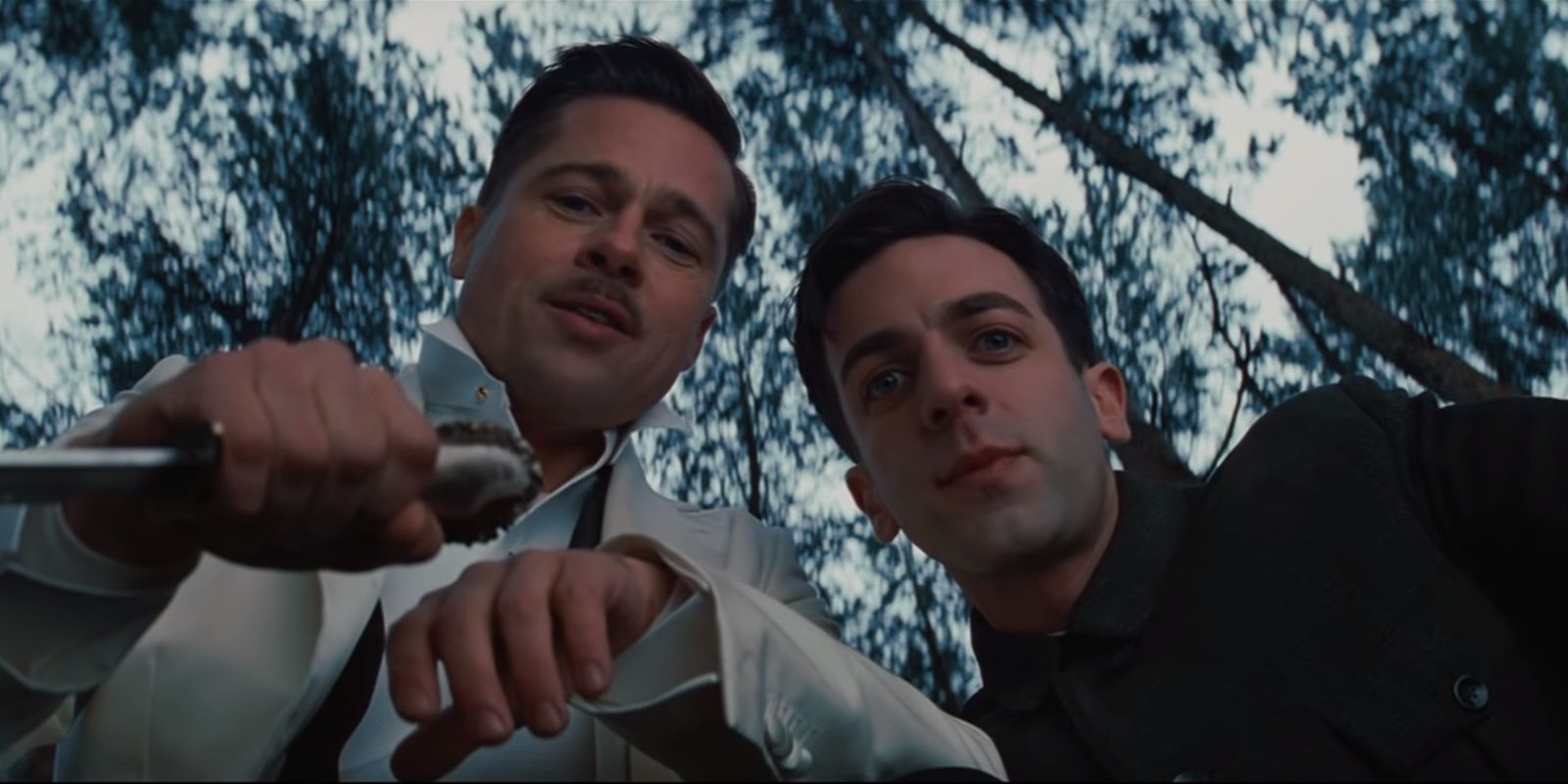Every Quentin Tarantino movie ends with a somewhat ambiguous final shot. None of his movies have a really definitive ending; he always leaves a couple of pieces out of the puzzle for the audience to figure out for themselves. What happened to Django and Broomhilda after they burned down Candyland? Did Mr. Pink get away with the diamonds or did the cops catch up to him? Did Rick Dalton’s Hollywood movie career finally take off?
A Tarantino ending always sparks an interesting conversation on the drive home from the theater. So, here are All Of Quentin Tarantino’s Closing Shots, Ranked.
Kill Bill: Volume 1
Quentin Tarantino wanted to make Kill Bill as one movie, but due to it being four hours long, the studio convinced him to split it into two parts and release it in manageable two-hour chunks. This meant that he could give the first part a tantalizing cliffhanger ending. But it’s not so much the shot (a blue-tinted closeup of a frightened Sofie Fatale) that gives this ending its sting; it’s the final line, uttered off-screen by Bill: “Is she aware her daughter is still alive?”
Throughout the whole movie, the Bride has been under the impression (and so have we) that her unborn child died during her coma. The revelation that her daughter is alive provides new hope for Volume 2. Now, it’s not just a story about a woman’s quest for bloody revenge. It’s about a mother’s quest to reunite with her daughter.
Death Proof
Death Proof has Quentin Tarantino’s simplest, least ambiguous ending. Throughout the movie, we’ve seen Stuntman Mike sadistically prey on young women and brutally kill them with his car. He gets into a pursuit with three women who he hopes to make his next victims, but what he doesn’t count on is their ability to fight back.
They run him off the road, and when he emerges from the wreckage of his car, they beat the crap out of him. After Zoë Bell (as herself) delivers the death blow, the trio throws their arms in the air in celebration, the shot freezes, and “THE END” zooms to the center of the frame.
The Hateful Eight
After an ultraviolent climax in which heads were blown off and a murderer was hanged, The Hateful Eight ended on a surprisingly quiet note. As Marquis Warren and Chris Mannix rest, bleeding out, barely able to speak, waiting to die, Chris asks to read the letter from Abraham Lincoln that Marquis revealed that he forged.
When John Ruth first read it and teared up, he thought it was real. Now that we know it’s a fake, it gets recontextualized. The movie ends sort of ambiguously. We don’t actually see Marquis and Chris die, but the camera panning up to look down on them from a high angle suggests they’re about to be judged.
Pulp Fiction
Following Pumpkin and Honey Bunny’s stickup in the diner, in which Jules pulled a gun and refused to let them take Marsellus Wallace’s briefcase (but allowed them to take his money, and everyone else’s by extension), Jules and Vincent decide to leave the diner. The camera tracks them, then settles as they conceal their guns on their way out the door.
Chronologically, this isn’t the final moment of the story. They’re going to return the briefcase, Jules is going to quit to wander the Earth, and Vincent is going to be shot dead by Butch Coolidge. It’s really the middle of the story. But it still feels like the perfect place to end the movie. The Lively Ones’ “Surf Rider” fits the scene beautifully. With Pulp Fiction, Tarantino wanted to deliver a rock ‘n’ roll spaghetti western, and he judged surf rock to be the rock ‘n’ roll version of a spaghetti western score.
Django Unchained
It’s typical for westerns to end with the heroes riding off into the sunset. In Django Unchained, the heroes ride off into the night. After Django triumphantly returns to Candyland to kill the rest of Calvin Candie’s basket of deplorables and save Broomhilda, he burns the plantation to the ground. Django simply tells his wife, “Let’s get outta here.”
As Candyland goes up in flames in an inferno behind them, Django and Broomhilda ride off to live a happy, free life together. It’s the happy ending that they both deserve, and we’ve been rooting for them to get it since the beginning.
Kill Bill: Volume 2
It’s tough to define the final shot of Kill Bill: Volume 2, because the movie ends, but then there’s an extra three minutes of footage as the end credits roll. These are the end credits for both movies, featuring a handful of actors and clips that only appeared in Volume 1 as well as plenty from Volume 2. The movie has a happy ending, as the Bride is reunited with her daughter, B.B..
That’s really what this movie is about. It’s not a story about a revenge. That’s how it starts, but it ends up being a story about motherhood. And that story finds the perfect final shot with the Bride driving with B.B., smiling as her hellish experience is over and her happiness can begin, with Uma Thurman being credited as “Beatrix Kiddo, AKA The Bride, AKA Black Mamba...AKA Mommy.”
Once Upon a Time in Hollywood
At the end of Once Upon a Time in Hollywood, the Manson Family murderers who killed Sharon Tate and her friends in real life decide to go to Rick Dalton’s house instead. There, Cliff Booth and his dog Brandy kill two of them, and Rick himself torches the last one with the flamethrower from The 14 Fists of McCluskey.
After all the commotion is over, Tate invites Rick up to her house for a drink. The camera lingers on the roof of the house, looking down, as Rick enters Hollywood’s inner circle. Will this lead to a role in a Polanski movie? Who knows? But Rick is in a better place.
Jackie Brown
Jackie Brown’s Jackie and Max have one of the most real and earnest relationships in any Tarantino movie. In the film’s final moments, Jackie visits Max one last time before leaving the country with her cut of the loot. She asks if he’ll come with her, but he refuses, so the pair share an emotional farewell. Then, Jackie goes out to her car and starts driving.
The story is over, but the camera lingers on Jackie for a while as the reality of her journey coming to an end sets in. From one perspective, this is also a new beginning for Jackie. It feels liberating. But without Max, it doesn’t feel complete.
Reservoir Dogs
It’s pretty obvious what happened off-camera — the cops arrived right after Mr. Pink left with the diamonds (and possibly caught him) and promptly shot Mr. White dead — but we don’t actually get to see what happened. It’s just ambiguous enough to provoke a conversation with your friends on the way out of the theater, but it still feels like a satisfying ending that ties up all the loose ends.
Quentin Tarantino pulls in so close on Harvey Keitel’s face that we can’t see what’s going on outside of his emotions. But that’s what’s really interesting about the final scene of Reservoir Dogs. After Mr. White goes to bat for Mr. Orange and kills a close friend for him, he finds out that Mr. Orange is the undercover cop, and in his final moments, Mr. White just feels betrayed by the kid he’d come to think of like a son.
Inglourious Basterds
The final scene of Inglourious Basterds provides us with the frontier justice we feared we’d be deprived of. After Col. Hans Landa cuts a deal to end the Second World War by making himself out to be the Allies’ hero, it seemed like we’d get a happy ending (the end of the war) at the cost of Landa meeting any real retribution.
And then, Aldo Raine and Private Utivich kill Landa’s goon and etch a swastika on his head, so the world will always remember him as a Nazi. As Aldo looks down and admires his handiwork, he tells Utivich, “This just might be my masterpiece.” Quentin Tarantino envisioned Inglourious Basterds being his own masterpiece, so there’s a self-awareness to this final shot, too.

